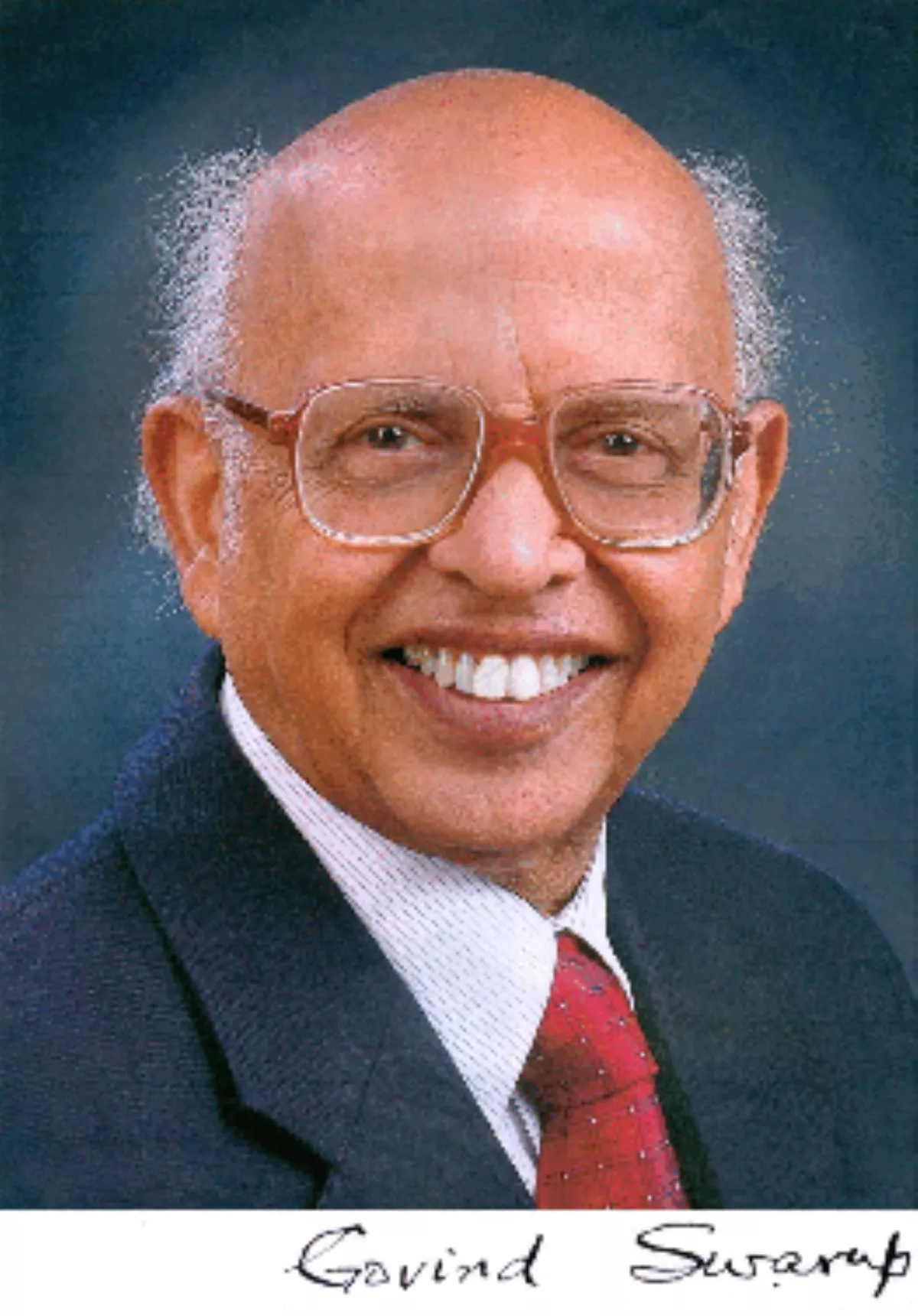 1.
1. Govind Swarup was the founding director of the National Centre for Radio Astrophysics at the Tata Institute of Fundamental Research.

 1.
1. Govind Swarup was the founding director of the National Centre for Radio Astrophysics at the Tata Institute of Fundamental Research.
Govind Swarup published over 125 research papers, edited 4 books, and held at least two patents.
Govind Swarup contributed to the fields of solar radio emission, radio galaxies, quasars, pulsars, interplanetary scintillation, dark matter and cosmology.
Govind Swarup was born in the town of Thakurdwara in Uttar Pradesh in 1929.
Govind Swarup attended Allahabad University, where he received his BSc degree and MSc in Physics.
In March 1953 Govind Swarup arrived at Potts Hill in New South Wales on a 2-year fellowship.
Govind Swarup worked closely with Pawsey, Wilbur Norman Christiansen, John Gatenby Bolton, Bernard Mills and others.
Govind Swarup was able to arrange for parts from a discarded 32-element array to be sent from Australia to the National Laboratory in India.
Govind Swarup worked as a research associate at the Radio Astronomy Station of Harvard University at Fort Davis, Texas.
Govind Swarup then became a research assistant at Stanford University in California, completing his doctoral thesis with Ron Bracewell.
Govind Swarup received his PhD from Stanford University in 1961 and became an assistant professor at Stanford University.
Govind Swarup was later awarded a number of honorary degrees: Doctor of Engineering, University of Roorkee in 1987 and Doctor of Science, Banaras Hindu University in 1996.
Govind Swarup was given an honorary Doctor of Science by Pandit Ravishankar Shukla University, Raipur in 2010.
Govind Swarup became project director of the GMRT in 1987, centre director of the National Centre for Radio Astrophysics of TIFR in 1993 and retired from TIFR in 1994.
At Stanford Govind Swarup continued to make studies of radio emissions from the Quiet Sun and developed a gyro-radiation model of solar emissions of microwave radiation.
Govind Swarup explained the emission mechanism of sunspots in terms of gyroresonance processes.
In 1959, Govind Swarup developed a technique for the round-trip transmission of phase measurements that enabled the phase equalization of all 32 antennas in an array to be carried out in minutes rather than weeks.
In 1962 Swarup used the Stanford compound-grating interferometer to examine Cygnus A Previous researchers had shown that the radio galaxy contained two distinct radio lobes.
In 1963 Govind Swarup reported the presence of a continuous "bridge" of radio emissions between the two lobes, the first instance of a steep spectrum bridge.
In 1979, Govind Swarup went on sabbatical at the Very Large Array in New Mexico, where studied jets and hot spots.
Govind Swarup has used the GMRT to observe the emission and absorption of atomic hydrogen from objects in the early Universe, examine the cosmic cold spot, and study radio emissions from Venus.
Govind Swarup was married to Bina Swarup and resided in Pune, India.
Govind Swarup had an elder brother in Kanpur, Mahesh Govind Swarup Agarwal, who was an industrialist.